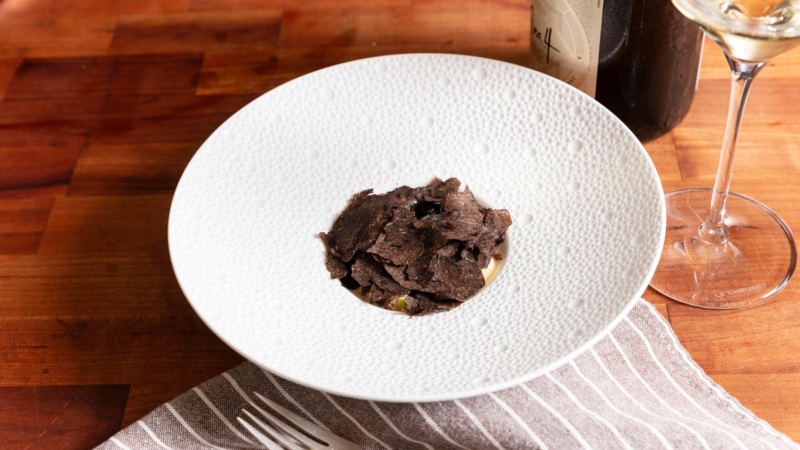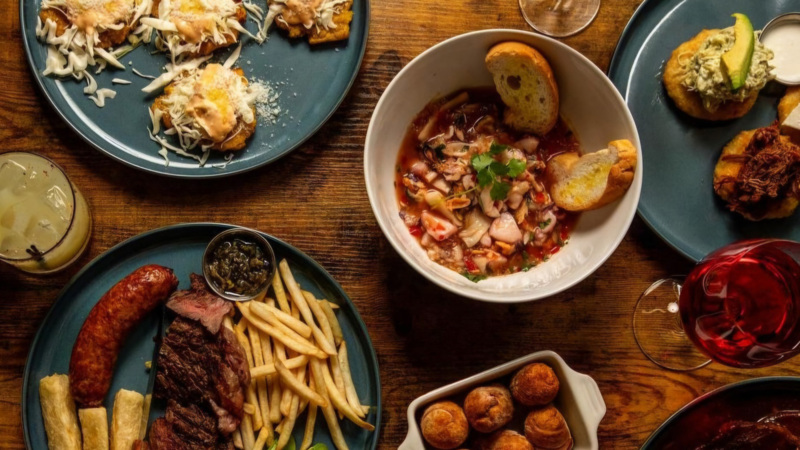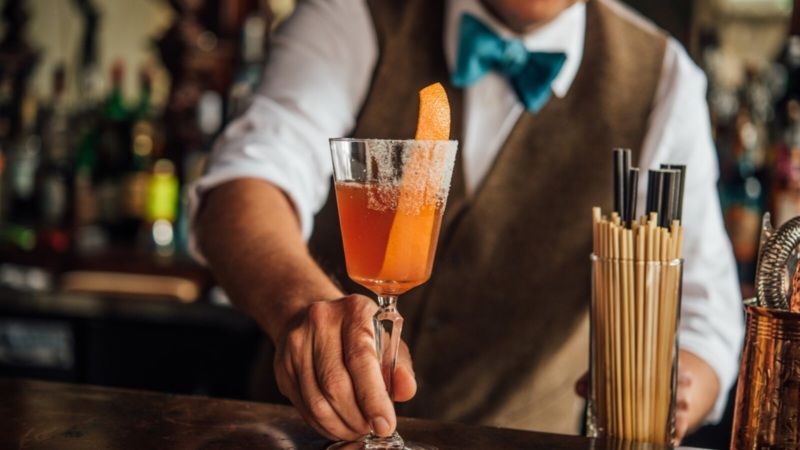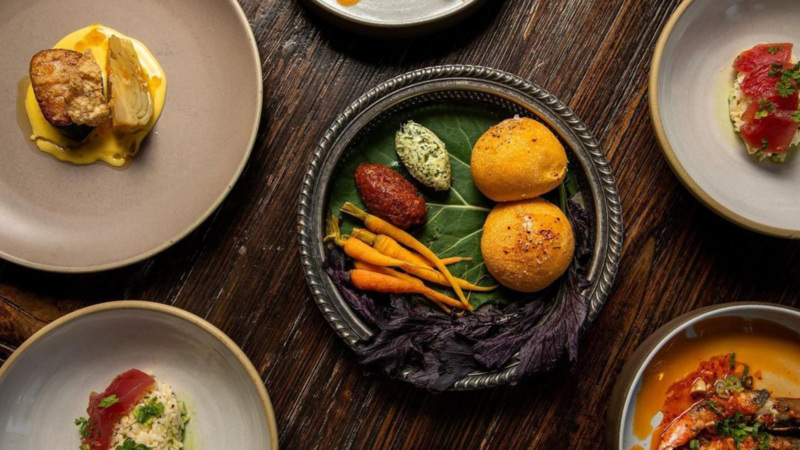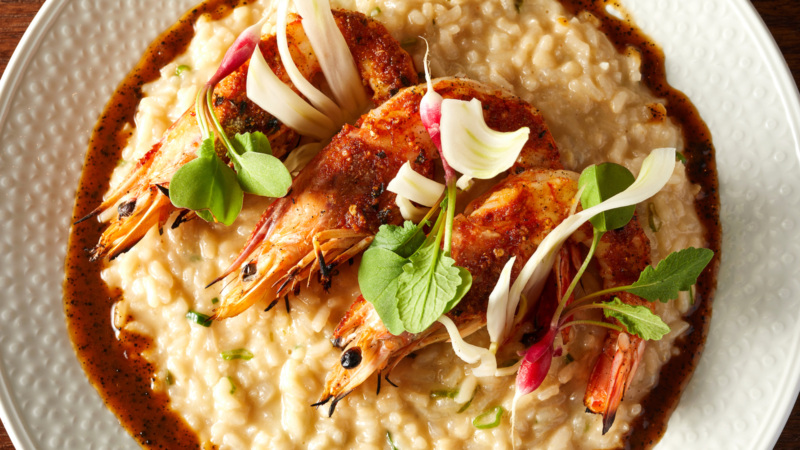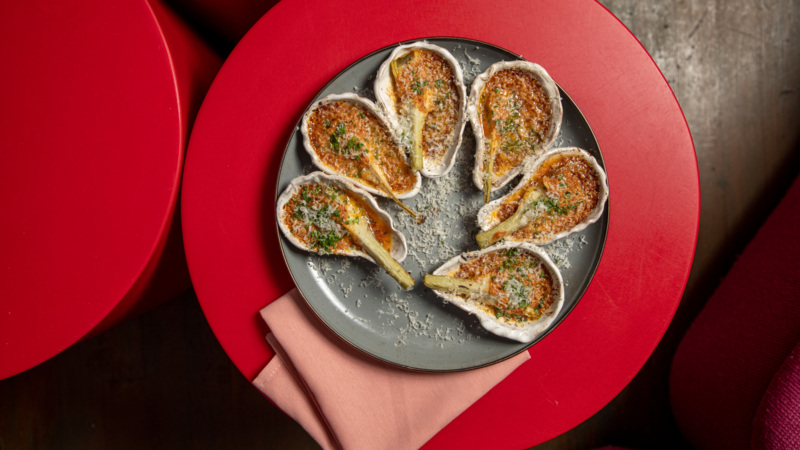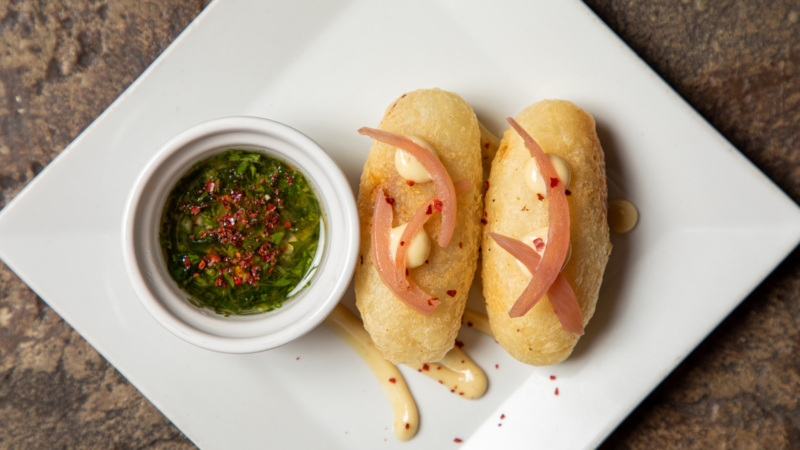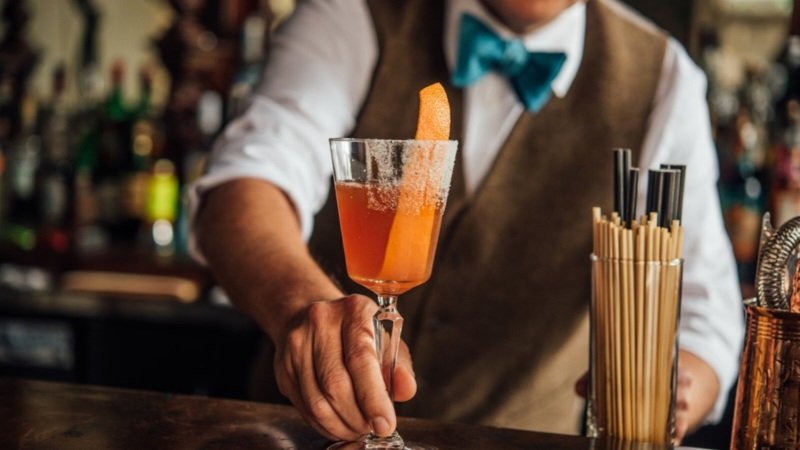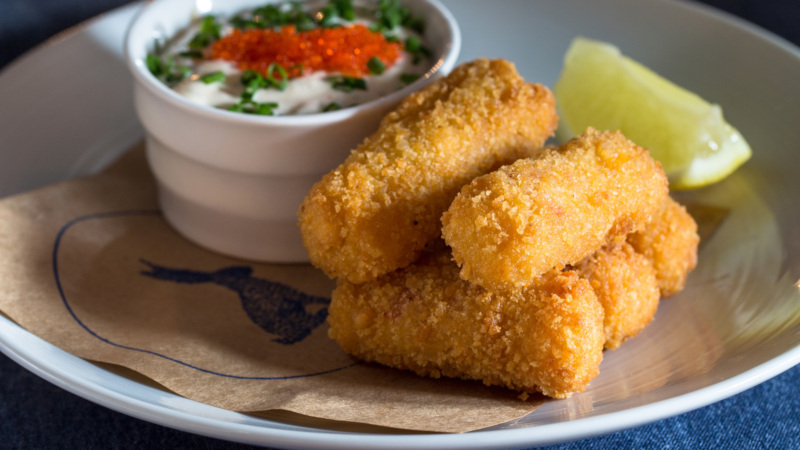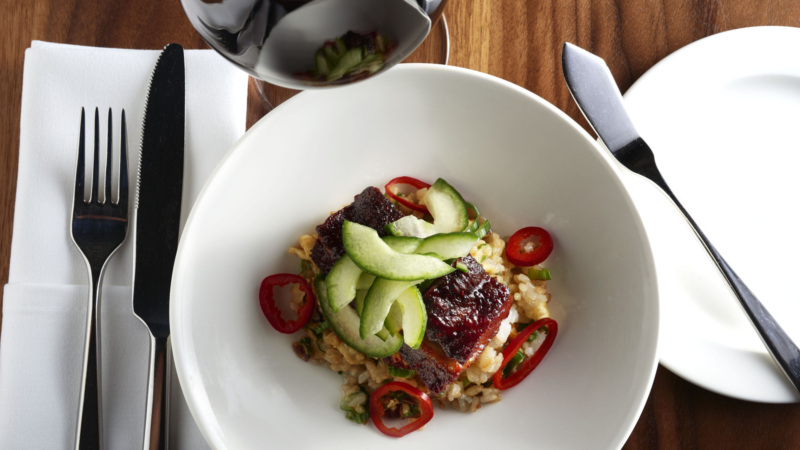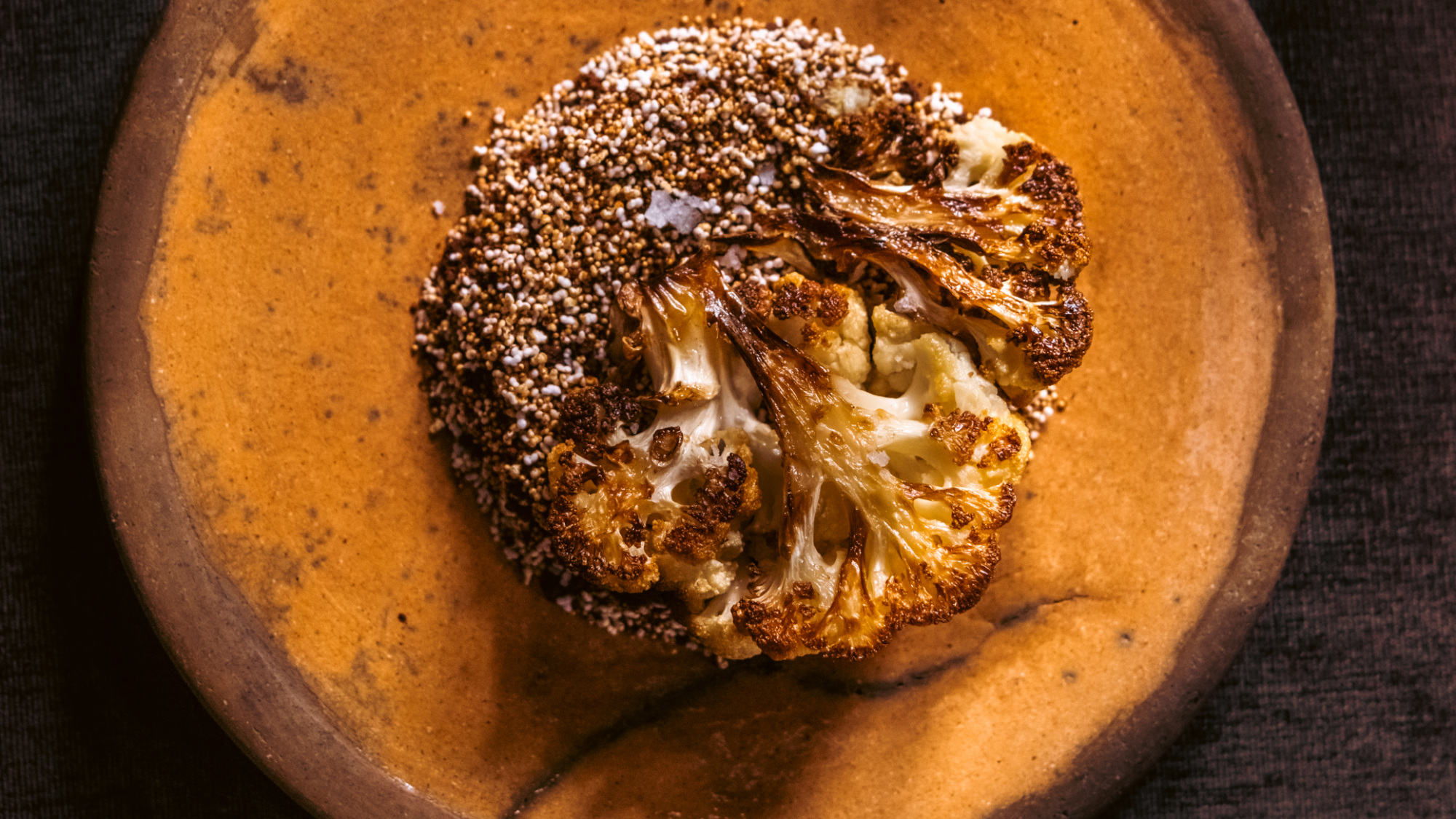
How Lengua Madre’s Ana Castro Honors Her Mexico City Upbringing
“Lengua Madre is a very personal contemporary Mexican restaurant. It’s not fancy; it’s not your regular kind of Mexican restaurant in the United States,” says Ana Castro, Lengua Madre’s executive chef. “I’ve never worked at a Mexican restaurant. I’m just going off my instincts.”
Born in Texas and raised in Mexico City, Castro’s intuition for Mexican-ness is fine-tuned. The sharp pink color palette and clean angles at Lengua Madre are an homage to the legendary architect Luis Barragán: “My family are engineers and are obsessed with Barragán. I could spend hours watching them sigh over walls and colors.”
The presence of plants near a mirror at Lengua Madre is a hat tip to Castro’s grandmother: “That’s what she does at her house.” What you will not see is Castro telegraphing her own heritage through hagiographic imagery of her abuela: “My grandmother is mine. There’s no price tag on that.”
Instead, through a five-course prix fixe that changes regularly, Castro honors and celebrates her childhood in CDMX. There is always masa — a lot of it — on the menu at Lengua Madre.
“I always try to include it in at least three forms on every version of the menu,” Castro says. She also showcases her current home in south Louisiana, with Gulf fish and shrimp starring in dishes and homegrown ingredients like cane sugar and Ponchatoula strawberries central to the execution of others.
Lengua Madre is both wholly personal, the story of Castro’s youth and her kitchen travels to India and New York, and singularly New Orleanian, influenced by her years working at Coquette and her fondness for the Crescent City.
You never know what you might eat at Lengua Madre. But there is a blueprint to Castro’s menu. Masa, rice, and mole are staples, as is Gulf seafood. Here’s a guided tour through Lengua Madre from one recent menu.

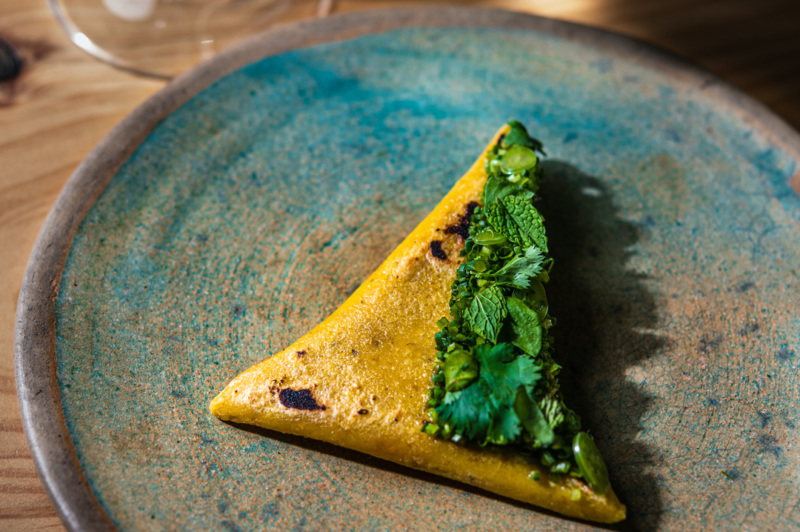
1. Sope with Huitlacoche and Goat Cheese
This saucer-shaped antojito is made with masa ground from nixtamalized chalqueño blanco corn from Central Mexico. Sopes are a street-food staple in Mexico, and Castro contrasts sopes’ egalitarian origins with one of the most cherished ingredients in Mexican cuisine: huitlacoche. The corn fungus takes quite the journey to arrive in New Orleans: It is harvested in Oaxaca, sent to the border at Reynosa, then Castro has to intercept it at the Southwest cargo bay each Thursday. “I’ve never seen this quality of huitlacoche in the USA,” says Castro. “It’s the most expensive ingredient on the menu. More than the fish even.”
The combination of huitlacoche with goat cheese is a cheeky play on a classic CDMX pairing from the 1990s. “If you went to someone’s wedding in the ’90s, the chicken at the reception was always stuffed with huitlacoche and served on goat cheese sauce.” That pairing was ubiquitous in Mexico City during that era, like beet and goat cheese salad was in the States. For Castro’s preparation, the huitlacoche is sautéed with fermented green garlic and sweet Silver Queen corn, piled into the fried sope shell, then finished with shaved serrano pepper and a chèvre ribbon, an homage to squiggle-obsessed local cake legend Bronwen Wyatt of Bayou Saint Cake.
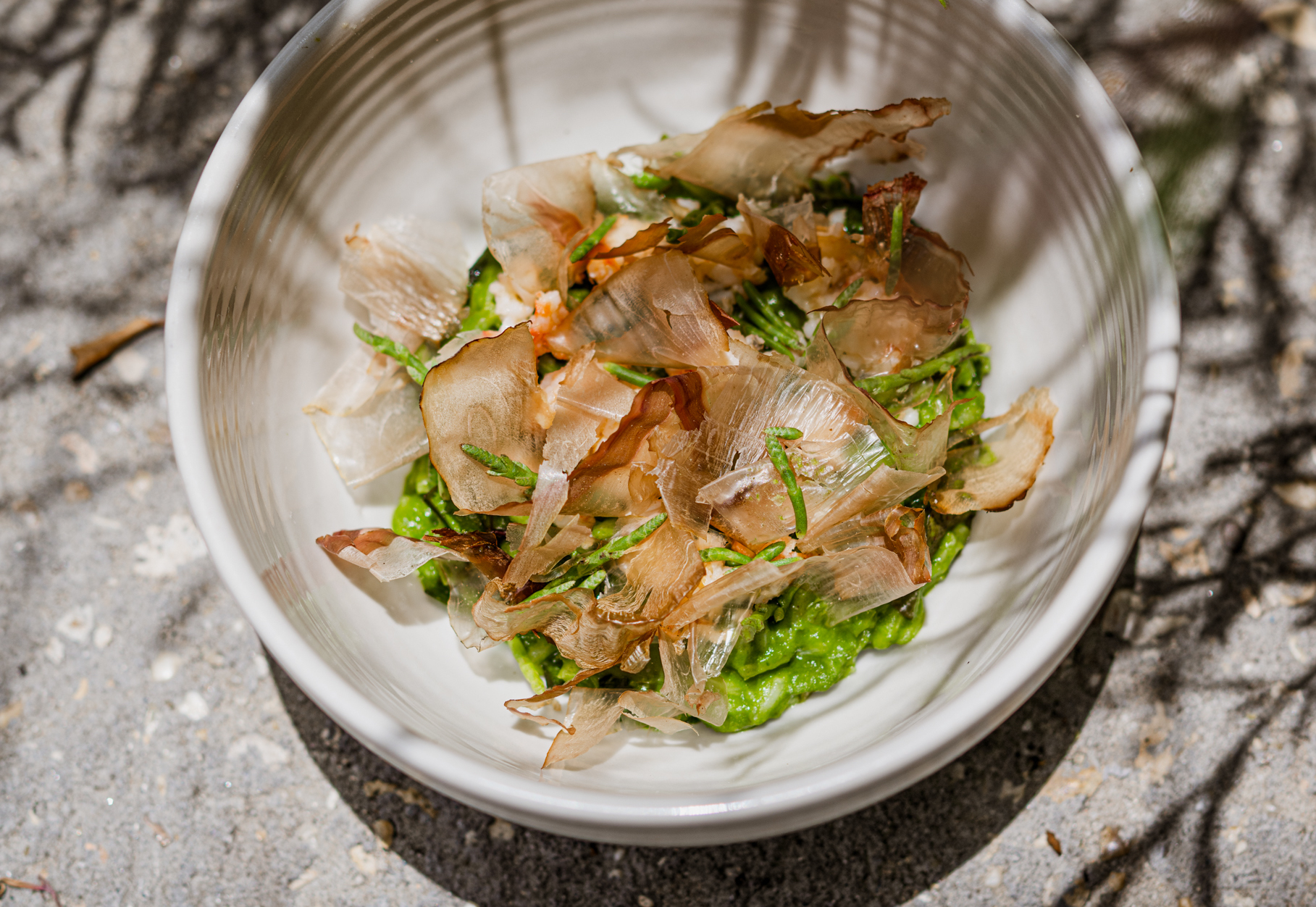

2. Arroz Verde with Louisiana Rice and Gulf Shrimp
“I always like to incorporate a rice dish because of the huge cultural footprint of rice in Mexico,” says Castro. “Not just as a side, because rice is also often the star. My aunt Conchita was the tía who would pinch your cheeks really hard. But we suffered her sh*t because she made this amazing green rice that was soupy and not quite risotto, but also not a pilaf.”
Castro uses local rice from Prairie Ronde in Opelousas, Louisiana, and makes a soubise fortified with fennel and poblanos. Plus any greens in season, such as spigarello, sorrel, and kale. “It’s supposed to be a really concentrated bite,” she says. Chopped shrimp are set on top along with sorrel chips and, in a lively mic drop, a dusting of dried bonito flakes. When the plate is placed in front of a guest, the bonito dances from the rice’s heat.
3. Mole Blanco with Roasted Cauliflower
“Mole gets so mischaracterized in the United States. ‘Oh, the thing with chocolate!’” says Castro. She explains that “mōlli” in Nahuatl translates to “sauce of,” so “etymologically, mole can be whatever you want it to be.” This recent mole at Lengua Madre is a play on a mole Castro ate in the city of Taxco. “My mole is vegan and has sesame seeds, pine nuts, onions, raisins, and habaneros — and that’s it. Well, plus a tiny bit of coriander seeds.”
Each of Castro’s moles served since Lengua Madre opened have been an exercise in monochromy. This one is all about white and mutedness. The mole itself is white, the roasted cauliflower astride it is white with brown accents, and the garnish of brown-butter dust and popped amaranth accentuates the earth-tone palette. The presence of the amaranth is a reference to the import the grain had in pre-Hispanic Mexico: “The Spanish colonizers tried to wipe out amaranth because it had such spiritual value to Mexicans.”
4. Cobia al Pastor
The first courses are meant to challenge guests and their understanding and perception of Mexican cuisine. The main course, on the other hand, is designed to be approachable, says Castro. “It’s about being comforting, not just unchallenging. The main course should be like a rom-com: You don’t have to think about it too much to enjoy it.”
Local cobia is marinated with a classic al pastor marinade of annato, árbol chiles, pineapple, white vinegar, and oregano. Then the fish is grilled on a Japanese-style grill over binchotan charcoal and topped with shaved white onions. On the plate are an array of saucy complements. Tepache sauce is made with pineapple skins, ginger, and ancho chiles. A quenelle of roasted pineapple puree adds sweetness, and a ramekin of salsa verde brings punch. And, of course, there are tortillas, this time made with chalqueño azul masa. “Tortillas are the Mexican fork. I always want there to be tortillas — especially for a dish that’s a play on a taco.”
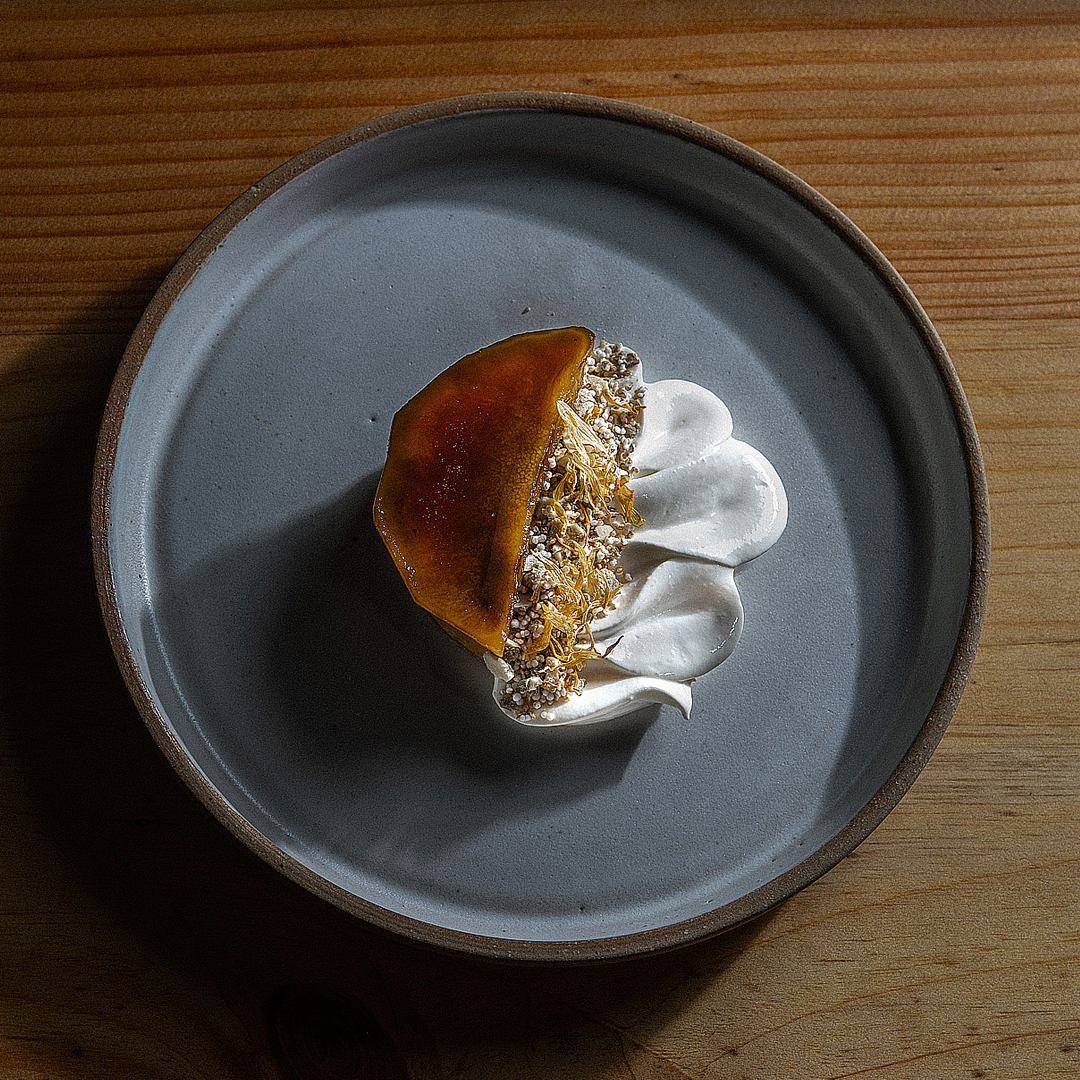
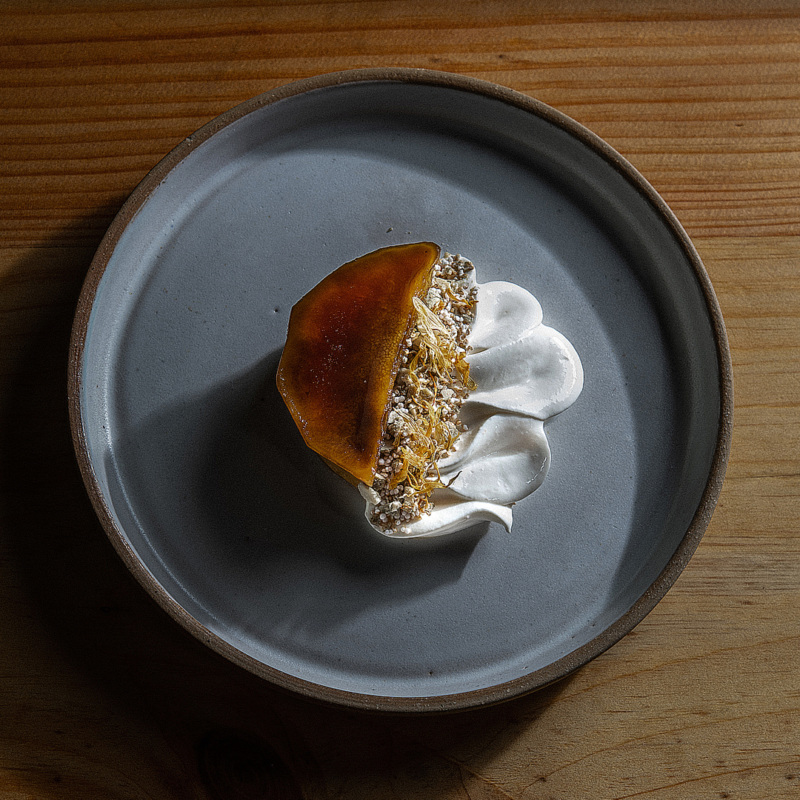
5. Nicuatole with Strawberries
Being Mexican is all about masa, notes Castro. So she likes to end the meal where it began. Not only to trumpet masa’s importance but also its versatility. Again, she uses the chalqueño blanco masa she shaped for the sope, this time blending the masa with water. She then strains it and cooks it like a creme anglaise with milk from Feliciana’s Best Creamery in Slaughter, Louisiana. “I’m not a pastry chef, so I do what I can with what I’ve got,” says Castro. “I also don’t have a super sweet tooth. My desserts are always a little savory.” The result is a rustic, jiggly dessert with the texture of a taut custard and sweetened with cane sugar from Three Brothers Farm and seasoned with cardamom, cinnamon, and a vanilla bean.
Multiple strawberry treatments finish the dish, including strawberries poached in Atxa vermouth. And those freeze-dried strawberries? Those are a nod to Castro’s childhood obsession with astronaut food. “My family visited the Houston Space Center when I was a kid and me and my siblings were all jumping around wanting a space blanket and space pen and freeze-dried ice cream. My mind was blown by the ice cream.”
Scott Hocker is a writer, editor, recipe developer, cookbook author, and content and editorial consultant. He has worked in magazines, kitchens, newsletters, restaurants, and a bunch of other environments he can’t remember right now. He has also been the editor in chief of both liquor.com and Tasting Table. Follow him on Twitter; follow Resy, too.
Discover More
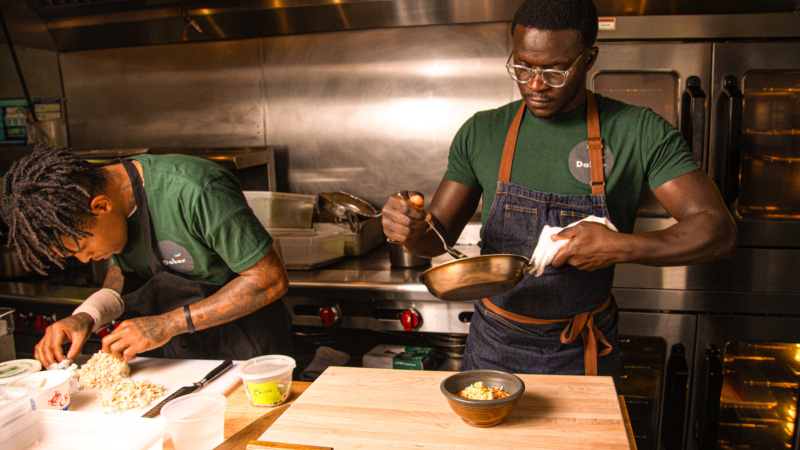
Stephen Satterfield's Corner Table










